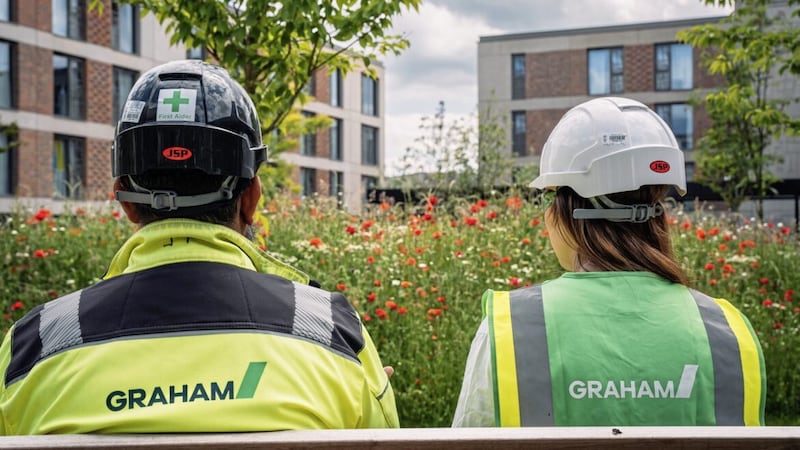THE pace of house price growth in Northern Ireland continues to gain momentum, despite rising inflation and living costs, according to the latest research from Ulster University.
Its quarterly house price index show a price growth of 2.3 per cent for the first three months of this year, with annual price increases equating to 9.7 per cent.
And the overall average price of residential property in the north now stands at £202,325.
The biggest percentage growth from the fourth quarter of 2021 to the first quarter of this year came in the Derry City and Strabane council area, rising by 17.1 per cent to an average £147,657.
There was a 12.5 per cent surge in Causeway Coast and Glens to £200,467, while there was a 10.7 per cent uplift in Antrim and Newtownabbey to £176,788.
By property type, terraced houses performed best over the quarter, rising 6 per cent, while semi-detached homes rose in value by 5.2 per cent. However, there was a 1.7 per cent fall in the value of detached houses.
But despite this market buoyancy, housing experts are warning rising living costs and inflation are already breeding uncertainties, and will present challenges in the longer-term, including a softening of demand which will subsequently impact housing prices.
The index, produced by Ulster University in partnership with the NI Housing Executive and Progressive Building Society, said that over the next three months, 53 per cent of estate agents anticipate further price inflation, with the remaining 47 per cent anticipate that pricing structures will remain consistent with the first quarter of the year.
Among other key report findings is that a lack of quality stock – particularly detached family homes within the £200,000 to £300,000 pricing bracket – is an acute problem.
Lead researcher Dr Michael McCord, reader in real estate valuation at Ulster University, said: “The market has continued to see price growth, not only been driven by continued demand and sales completions, but as a consequence of the ever-increasing supply crunch which has emerged over the past four quarters, which is distorting normal market operations and imbalance.
“But the heightened costs of materials are beginning to have an impact on development phases being released which is further squeezing the supply side of the market.
“Equally, the current inflationary pressures and emergent cost of living crisis also evident in the market. While these are not curtailing current market sentiment or indeed appetite, they may start to have an impact upon future demand over the next few quarters and translate into house prices tapering off.”
Ursula McAnulty, head of research at NI Housing Executive, which commissions the research, said: “The cost of living increases, in particular rising fuel and energy costs, recent interest rate increases, and the impact of the wider economic situation, suggest some tempering of the market over 2022.
“While in the short-term prices and demand are likely to be maintained into quarter two, the combined impact of these factors is likely to be felt, particularly amongst lower income households, in the medium term.”
Michael Boyd, deputy chief executive and finance director at Progressive, said: “An uplift of buyer activity is to be expected during what is traditionally a period of renewed market momentum in the early part of the year, spurred by purchaser confidence and the direct correlation between initial viewings and agreed sales.
“Current pricing structures within the market are expected to be maintained through heightened build costs and the continue imbalance between demand and supply.
“As we look forward to the rest of the year, rising inflation and household costs remain a challenge within the longer term, with some agents of the view that it will soften demand and subsequently house price rises.”








